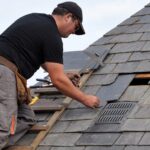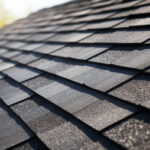Deciding the correct size plywood for your roof is a crucial part of ensuring a stable and durable shelter. Homeowners worldwide search for this knowledge when either repairing or constructing a roof, and feeling delighted about choosing the right materials is paramount. You’re in the right place as we uncover key insights: it’s here to guide you!

Understanding Roof Structure
A roof’s purpose is to protect homes from weather elements. It is composed of various layers, with plywood acting as the bridge between the outer roofing materials and the structural support below. The size and thickness of plywood contribute significantly to a roof’s overall strength.
As selecting the right roofing company is vital, understanding the materials you use is equally important. The roofing materials you choose will affect everything from cost to the longevity of your roof.
Why Plywood is Important
Plywood offers multiple advantages. The material is flexible, durable, and resistant to impacts thanks to its cross-laminated structure. Its popularity among homeowners is soaring, with industries approving its terrific versatility.
For instance, in the construction world, like in EPDM or TPO roofing, plywood is often chosen due to its balancing of strength and weight.
Big Decision: Choosing the Right Thickness
The size of plywood required may vary. The right thickness usually lies between 1/2 inch to 3/4 inch, but this depends on a few factors, including local building codes, rafter spacing, and anticipated roof loads.
Analyzing Factors Affecting Size
The factors affecting the size of plywood for roofing include:
- Rafter Spacing
- Local Building Codes
- Weather Conditions
- Roof Pitch
Technology & Its Impact on Roofing
As technology advances, so does its influence on roofing materials. Smart materials and techniques have started integrating into the construction processes.
Technology introduces tremendous solutions that allow you to monitor and maintain your roof more effortlessly.
Tremendous Benefits of Correct Sizing
Choosing the correct plywood size ensures:
- Optimal load-bearing capacity
- Reduction in construction delays
- Longevity of the roof
Steps in Proper Installation
The installation process also plays a part in the longevity and reliability of the roof. It’s essential to use nails appropriately, ensure a snug fit, and align the panels perfectly.
Consult professional guidelines and videos on the following roofing materials for more details.
Understanding Building Codes and Permits
Before any construction or repair, understanding local building codes is vital. This involves knowing how thick your plywood must be and ensuring all materials meet the required standards.
Refer to sites like Rated People’s cost guide to explore more budgeting tips and requirements.

Added Considerations in Roofing
Don’t forget essential elements like rain gutters, insulation, and ventilation. Each contributes to the efficiency and durability of your roof.
Hiring the Approved Professionals
To ensure quality work, it’s essential to work with professionals familiar with local standards and requirements. They possess essential skills and certifications for safe installation.
FAQs
Can thin plywood effectively support a roof?
Generally, thinner plywood might not support significant loads or harsh weather conditions sufficiently.
How does plywood thickness impact cost?
Thicker plywood might increase upfront costs but provides enhanced durability and stability, leading to long-term savings.
What tools are necessary for installing plywood roofing?
Essential tools include a circular saw, drill, hammer, and measuring tape, among others.
Feel free to visit our detailed roofing guides like choosing roofing materials for more insights!
This article aims to provide clarity and confidence in navigating roofing decisions. Happy building!
This article contains affiliate links. We may earn a commission at no extra cost to you.








